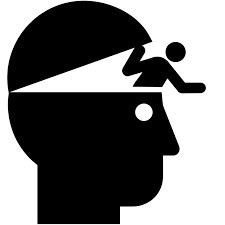Copy Link
Add to Bookmark
Report
Short Talk Bulletin Vol 12 No 05

SHORT TALK BULLETIN - Vol.XII May, 1934 No.005
MASONIC GEOMETRY
by: Unknown
Fellowcrafts receive several admonitions and exhortations regarding
the Sciences of Geometry and astronomy, and many an initiate has
wondered just how far his duty should carry him in undertaking anew
the study of branches of mathematics which are associated in his with
much troubled effort in school days.
While some mathematical-minded men may find the same joy in the study
of lines, angles, surfaces, spheres and measurements which the
musician obtains from his notes, the painter from his perspective and
colors; and the poet from his meter and rhymes; comparatively few
brethren rejoice in the study of the mathematically abstruse.
This must have been well known to Preston, when he wrote those
portions of our Fellowcraft Degree which we owe to his genius, as to
any modern. So it seems fair to conclude that it was less the
literal study of geometry, with a design to become an expert, than a
figurative appreciation of its implications which the great Master of
Masonry had in mind. Indeed, a careful and critical examination of
the ritual which speaks of geometry, and its child, astronomy, will
demonstrate this.
Fellowcraft rituals, in this country, with very few exceptions trace
back to Thomas Smith Webb. Because of the variations which ritual
committees, Grand Lecturers and others have introduced, so that few
Jurisdictions are exactly at one as to what is the proper form. our
examination here will be based on Webb. His several para-graphs,
here quoted in succession although separated in his Monitor, read
as follows:
Geometry treats of the powers and properties of magnitudes in
general, where length, breadth and thickness are considered; from a
point to a line, from a line to a superficies and from a
superficies to a solid.
By this science, the architect is enabled to construct his plans and
execute his design; the general to arrange his soldiers; the engineer
to mark out ground for encampments; the geographer to give us the
dimensions of the world, and all things therein contained, to
delineate the extent of seas, and specify the divisions of empires,
kingdoms and provinces; by it also, the astronomer is enabled to make
his observations, and to fix the duration of times and seasons, years
and cycles. In fine, geometry is the foundation of architecture, and
the root of mathematics.
Astronomy is that divine art, by which we are taught to read the
wisdom, strength and beauty of the Almighty Creator, in those sacred
pages of the celestial hemisphere. Assisted by astronomy, we can
observe the motions, measure the distances, comprehend the
magnitudes, and calculate the periods and eclipses of the heavenly
bodies. By it we learn the use of the globes, the system of the
world and the preliminary law of nature. While we are employed in
the study of this science, we must perceive unparalleled instances of
wisdom and goodness, and through the whole creation, trace the
Glorious Author by his works.
Geometry, the first and the noblest of sciences, is the basis on
which the superstructure of Masonry is erected. By geometry, we may
curiously trace Nature, through her various windings, to her most
concealed recesses. By it we discover the power, the wisdom and the
goodness of the Grand Artificer of the Universe, and view with
delight the proportions which connect this vast machine. By it, we
discover how the planets move in their different orbits, and
demonstrate their various revolutions. By it we account for the
return of the seasons and the variety of scenes which each season
displays to the discerning eye. Numberless worlds are around us, all
framed by the same Divine Artist, which roll through the vast
expanse, and are all conducted by the same unerring laws of nature.
The study of the liberal arts, that valuable branch of education,
which tends so effectually to polish and adorn the mind, is earnestly
recommended to your consideration; especially as the basis of our
art. Geometry, or Masonry, originally synonymous terms, being of a
divine and moral nature, is enriched with the most useful knowledge;
while it proves the wonderful properties of nature, it demonstrates
the more important truths of morality.
The interested Mason will find here far less of admonition to make
himself a geometer than an attempt to make him appreciate what the
science of geometry means to Masonry, as a demonstration of the
glorious works of creation, the majesty and awe-inspiring magnitude
of the universe, and thus, the perfection of our divine creator.
To understand how geometry demonstrates the more important truths of
morality, it is essential to comprehend just what this science
really is.
Geometry is that deductive science which deals with the properties of
space, and masses which occupy space.
Science is exact and classified knowledge. In the last analysis all
science is measurement. It may be measurement of time or space; of
atom or electron; of event or process, but measurement it is. Hence
geometry, which is based on measurements of area, masses, angles,
spaces and the relations between them, is fundamental to all science.
It may come as a shock to some minds to know that there is not,
strictly speaking, any really exact science. One of the greatest
truths man has learned, in all his centuries of study, is that there
is no absolute to be known; all truths, including the mathematical,
are relative. There is no absolute rock on which any geometry,
either the familiar Euclidian geometry of our school days or the non-
Euclidian geometries of the mathematician, can be based.
For all geometries are founded upon some assumptions.
The axioms of geometry are so-called self-evident truths which not
only need no proof. but which cannot be proved. These self-evident
truths are those which we instinctively know by experience; truths
which no counter experience questions. And right here we meet with
one of the great pregnant meanings of Geometry from the Masonic
standpoint. The whole of the system of Freemasonry, the essence of
all its teachings, the content of all its philosophy, the soul of all
its morality, rest upon an axiom, an assumption which can never be
proved, as either mathematical or legal world understands the word
proof . . . the existence of Deity.
Deity can neither be proved nor disproved, using the word in the
scientific sense. Proof is a process of he mind, a matter of
logic, a satisfaction of the intellect, and in the end rests upon the
assumption that which is universally observed, and universally
constant, has always been and always will be so. It is unthinkable
to our minds that two plus two could ever be anything but four,
though we perform the addition on the farthest star. Yet we are
learning that what seems true when bounded by earthly conditions,
is not necessarily true when considered from a vaster and more
distant viewpoint.
Belief in Deity is not the result of a process of the intellect, but
of the heart or soul.
Man is now, has always been, and presumably will always be, universal
in his belief in, and longing for, a Great Architect of the Universe.
Masons accept the belief without question. It is part of our lives;
we could have no masonry without it. Lacking it we could not live as
we understand life. But from the scientific standpoint it is as
impossible to prove as are any of Euclids axiom, without which there
could be no geometry.
And those very statements are as near a proof as we can come.
Surely, if it is a fair assumption that the geometry on which rests
all science, and which in itself rests upon unprovable axioms, as a
true science, so is the belief, on which rests all hope and
happiness in life, but which is not scientifically provable, a true
belief.
We are taught that geometry demonstrates the more important truths
of morality.
Morality can hardly here mean any code of human conduct, such as
the observance of the ten commandments, the live and let live idea
on which modern civilization is founded, observance of man-made law,
etc. Such, indeed, is morality in the strict sense, but here
morality must mean something much greater and quite different. The
more important truths of morality which geometry teaches must be
those fundamental beliefs on which all life is founded; the existence
of Deity, the immortality of the soul, the reality of the love of God
for his children.
The intelligent reader will have noted that here Preston says
demonstrate and not prove, as he does a phrase before. Geometry
may prove the wonderful properties of nature but demonstrate is
as much as we can claim for the more important truths of morality.
Imagine yourself in the middle of the Sahara desert.
You are alone, many miles from any human being, You have no
knowledge whatever that any one has passed this way before you.
Suddenly you come upon a watch, lying in the sand. It is running,
and it agrees with your watch. On tests you find that the watch
will run but thirty-six hours without winding.
You are absolutely certain, and no one could convince you to the
contrary, that, (1) some human being was here within thirty-six
hours, or, (2) that the watch was tied to some animal, and fell off
that animal at the spot where you found it, or, (3) that is was tied
to some bird, and fell from the bird, or (4) that is was dropped from
an airplane or balloon.
The one inescapable fact is that the watch was running; it had been
wound within thirty-six hours.
Geometry demonstrates the more important truths of morality very
much as the watch demonstrated to you that some one had been where
you found it, before you. A running watch proves a maker and
winder . . . the human mind is so constituted that it cannot conceive
of a plan without some intelligence to make the plan. No power or
argument could convince you that the watch made itself; or rolled or
flew to the spot where you found it. It is a watch - therefore it
was made by hands. It runs - therefore it was wound. It is where no
watch can be, ordinarily speaking - therefore it was brought to that
spot by something living.
The geometer measures the numberless worlds around us, which roll
through the vast expanse and are all conducted by the same unerring
laws of nature. From his measurements he concludes that the orbit
of a certain planet - say Venus - is such-and thus, and its time of
travel from here to there is so-and-so many days. By careful
computation, aided by numberless observations, he reduces these facts
to exact data. From these he predicts that on a certain day, at a
certain hour, minute and second, Venus will appear against the sun -
will transit, in other words.
If, then, Venus does cross the face of the sun, beginning at the
time predicted, and taking just the interval prophesied to do so, the
geometer knows, as well as it possible for the human mind to know,
that his calculations are correct.
In other words, Venus revolved in her orbit and the sun swung in his,
according to plan.
The astronomer repeats the feat for a thousand heavenly happenings.
Eclipses of the sun, moon, the tides, occultation of countless stars,
the beginning and ending of times and seasons he predicts in
advance with such accuracy and certainty, that no brother scientist
questions the verity of his predictions. All are agreed that the
numberless worlds about us roll through the vast expanse according
to a plan.
The previous statement is here repeated; there can be no plan
without a planner!
In this way, then, does geometry demonstrate the most important
possible truth of morality - the definite existence of Some One who
planned; planned with such exactitude that even poor witless ignorant
humans are able to prophesy the future results of the working of that
plan.
Some stupid atheists counter such an argument by saying You do not
need a plan - the planets revolve according to natural law. Very
well, Who made the natural law? If the skeptic says Eclipses are
but the nature of things Who created the nature of things?
Question can be added o question, and each push the answer further
back in space and time and consciousness; but, inevitably, at the
end, we come to Who? That is geometrys demonstration of the
most important truth.
Our minds are wholly sense bound. We can obtain no information
regarding the universe except through our five senses, and the use
our intelligences make of the information thus secured. A man
without sight, hearing, smell, taste and feeling might still think,
but he could not communicate, nor be communicated to. A man so born
could never learn anything, since he would have no channels through
which even the simplest information could run. It is inescapably
true that if in our universe are facts which cannot be learned by our
senses, mortals can never learn them. In other words, there is a
limit to human knowledge. Therefore must there be a limit beyond
which no human science, such as geometry, can demonstrate great
truths. But with these we are not concerned, since those truths,
physical or moral, of which we know and of which we teach that a
geometrical demonstration is possible, are sufficiently beyond common
understanding without asking for others still less comprehensible.
If the more important truths of morality are, as stated:
1. Existence of Deity.
2. Immortality.
3. Love of God for his children:
Then geometry can be said to demonstrate the first, thus:
1. There is no plan without a planner - geometry proves that the
universe runs according to a plan, which follows laws to exact
that predictions successfully can be made from them.
2. It is impossible for Deity to be less perfect than his
creatures.
3. All his creatures exhibit love, tenderness and devotion for
their children. No human parent but would give indefinite life
to his child if he could.
4. Therefore, Deity, infinitely more perfect than the most perfect
of His children, has, in His infinite love, provided infinite
life for His children.
The attempt to prove that which is known of the soul in terms known
only of the mind is more or less fruitless. But it is only by some
such process of reasoning that we can follow out the admonitions of
the Fellowcraft degree. We are to study geometry, not so much in
books and lines and angles and measurements and axiom and theorems
and propositions and problems, as in a demonstration of the
wonderful properties of nature. From these we deduce that the
universe in general, and the world in particular, exist, move,
evolve, live according to definite laws or plans. Knowing that plans
cannot create themselves, any more than the watch in the desert could
create and wind itself, we are logically compelled to believe in the
planner. In the nature of things, as we know them. He who plans
must be more perfect than we who were planned. Our virtues, then,
must be but pale reflections of His. If we would not deny
immortality to those dependent upon us whom we love, then the love of
the Great Architect, and His provisions of immortality, are as much
proved to us as any processes of the mind can prove the certainty of
the soul.
So considered, the study of geometry, so magnificently set forth in
the Fellowcraft degree, becomes not an admonition to do examples or
learn from a book but a clarion call to understand that the
heavens declare the glory of God, and the firmament sheweth His
handiwork.





















